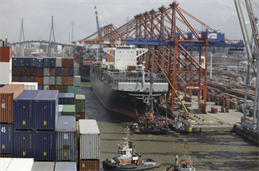
With a fragile ceasefire and deep uncertainty around any resumption in nuclear negotiations, the Middle East remains at severe risk of interstate war between Israel-Iran, with scope for escalation to a multifront conflict.
Economists from S&P Global Market Intelligence ran a scenario through the division's proprietary Global Link Model, to illustrate the potential impacts of an extreme escalation toward a regional conflict in the Middle East. This scenario is based on assumptions and is therefore viewed as a possible outcome, rather than a prediction.
The scenario input into the model assumes that the ongoing conflict between Israel and Iran escalates into a multifront regional war that includes the US.
As a result, there would be punitive strikes targeting critical infrastructure causing heavy disruption at select regional ports and key maritime routes like the Strait of Hormuz and the Red Sea for at least 2 quarters.
S&P said that with this, global oil prices would therefore rise by as much as 30% based on deviations from the historical trend. Finally, the cost and availability of oil and gas would be impacted, particularly hitting Asian and European economies dependent on oil from the Gulf.
As a result, the output of the model suggests that real GDP would fall by 1.7% in Q3, followed by a swift recovery as energy markets stabilize and inflation decreases.
It noted that the persistent effects on investment and trade would take the remainder of 2025 to return to previously anticipated levels.
S&P said APAC would also be strongly impacted (lower growth, higher inflation) as it is highly dependent on oil and gas imports from the MENA region. A potential reduction of industrial production and investment would lead to less employment and consumer spending over the medium term.
"The risk of miscalculation or unintended escalation among all key stakeholders remains high, with the potential for a broader regional war that could destabilize the Middle East and disrupt the global economy," said
Ken Wattret, vice-president, Global Economics at S&P Market Intelligence.
"Our proprietary model suggests that a regional war in the Middle East would cause the global economy to shrink by 1.7% in Q3, the first contraction since Q2 2020 (down 1.2%) during the pandemic."
"The projected growth rates in most major economies remain well below where they were prior to the November 2024 US elections, reflecting the unfolding impact of ongoing trade tensions and related uncertainties," Wattret added.



